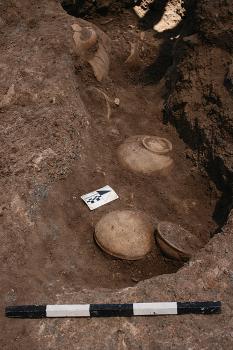American Journal of Archaeology | The Journal of the Archaeological Institute of America
You are here
The Early Iron Age Cemetery of Ḥorvat Tevet: Life and Death in a Rural Community in the Jezreel Valley
April 2024 (128.2)
The Early Iron Age Cemetery of Ḥorvat Tevet: Life and Death in a Rural Community in the Jezreel Valley
Recent salvage excavations at Ḥorvat Tevet in northern Israel revealed a cemetery consisting of at least 25 burials dated to the Iron I period (11th–10th centuries BCE). In this article, the burial practices employed in this cemetery are analyzed in order to shed light on the social complexity, economy, and funerary rituals of a rural community in the Jezreel Valley in the period between the collapse of Egyptian rule in Canaan and the formation of early monarchic Israel. Based on the finds in the graves and variations between graves, it is concluded that the site was home to a community characterized by minimal wealth accumulation, limited social division, and few long-distance trade contacts, though there are implications that the site had connections with the Beth-Shean Valley. This evidence is then contextualized in light of mortuary data from the Late Bronze II–Iron IIA Jezreel Valley in order to define aspects of continuity and change during the transition from Canaanite city-states to territorial polities.
Content warning: Readers are advised that this article contains photographs of human remains.
The Early Iron Age Cemetery of Ḥorvat Tevet: Life and Death in a Rural Community in the Jezreel Valley
By Jordan Weitzel, Karen Covello-Paran, Hannes Bezzel, Oded Lipschits, and Omer Sergi
American Journal of Archaeology Vol. 128, No. 2 (April 2024), pp. 145-166
DOI: 10.1086/728777
© 2024 Archaeological Institute of America


